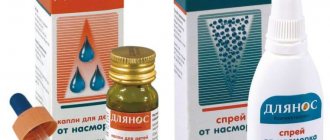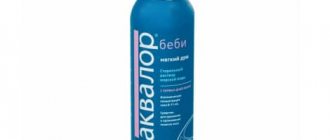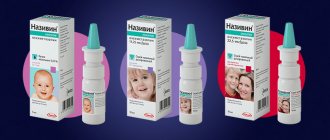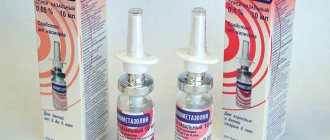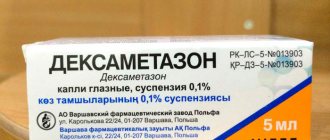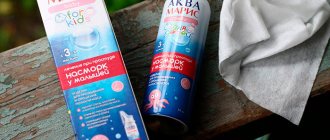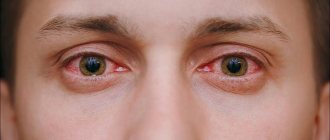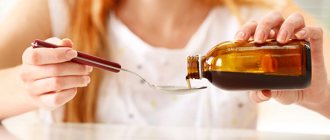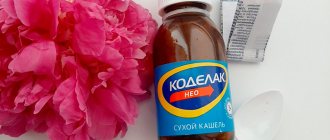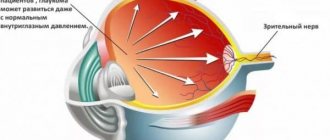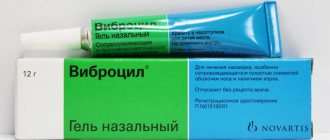| Naphazoline | |
| Chemical compound | |
| IUPAC | 2-(naphthalen-1-ylmethyl)-4,5-dihydro-1H-imidazole |
| Gross formula | C14H14N2 |
| CAS | 835-31-4 |
| PubChem | 4436 |
| DrugBank | 06711 |
| Classification | |
| ATX | R01AA08 |
| Dosage forms | |
| • nasal drops 0.05%, 0.1% • nasal spray 0.1% (“Sanorin”) | |
| Other names | |
| “Naphthyzin”, “Sanorin”, 《Nafazolin》 | |
Naphazoline
is a drug, an anticongestant (a means for constricting blood vessels) for local use with short action. White or white with a yellowish tint crystalline powder, difficult to dissolve in water, soluble in alcohol. Constant use of naphthyzine, naphazoline, as well as other topical decongestants often causes an independent disease - drug-induced rhinitis, as well as psychological and physiological dependence.
Indications
According to the instructions for use, Naphthyzin nasal drops are prescribed to patients when they develop the following conditions and ailments:
- Acute rhinitis (inflammation in the nasal mucosa).
- Eustachitis (inflammatory lesion of the auditory tube, leading to deterioration of ventilation of the tympanic cavity with the development of catarrhal otitis media).
- Otitis media (an infectious inflammatory process characterized by rapid development and localized in the middle ear).
- Bleeding from the nose.
- Allergic rhinitis (a disease that develops as a result of contact of allergens with the nasal mucosa).
- Laryngitis (inflammation of the mucous membranes of the larynx, which is associated with colds or infectious diseases such as scarlet fever and whooping cough).
- Acute nasopharyngitis (inflammatory disease of the nasopharynx of an infectious-allergic nature).
- Chronic conjunctivitis (a long-term inflammatory process in the mucous membrane of the eye, which is characterized by moderate swelling of the eyelids, as well as photophobia, increased lacrimation).
- Asthenopia (visual impairment, which is accompanied by increased fatigue when performing visual work).
- Sinusitis (inflammatory lesion of the mucous membrane of the paranasal sinuses).
What does Naphthyzin help with?
For children and adults, the drug is used for the same purposes to treat the same diseases. Naphthyzin should be used for:
- Acute course of rhinitis.
- Swelling of the larynx, regardless of its nature (due to radiation or allergies).
- Laryngitis.
- Acute eustachitis.
- Redness of the mucous membrane after surgical interventions.
- Rhinoscopy for better transfer of the procedure.
- Acute or chronic sinusitis.
Can naphthyzine be used as eye drops? It is actually used to eliminate asthenopic disorders and chronic conjunctivitis.
Important! Only the doctor should decide on the need for a course of pharmacotherapy. Self-medication is absolutely unacceptable.
Restrictions
Before starting treatment with the medicine, you must read the instructions, since the solution has a number of specific contraindications. According to the instructions for use, Naphthyzin drops are prohibited from being used for the following diseases and conditions:
- High blood pressure.
- Angle-closure glaucoma (a pathological process that leads to injury to the optic nerve).
- Individual intolerance to the drug.
- Pregnancy.
- Lactation.
- The patient's age is up to one year and six years (depending on the content of the active component).
- Hyperthyroidism (a disease that is caused by increased hormonal activity of the endocrine system and is characterized by excessive production of thyroid hormones).
- Atherosclerosis (a chronic disease of the arteries that occurs as a result of lipid metabolism disorders and is accompanied by the deposition of cholesterol in the capillaries).
- Chronic inflammatory process of the nasal mucosa.
- Tachycardia (sharp increase in heart rate, a sign of serious disorders).
- Heart rhythm disturbances.
- Diabetes mellitus (a chronic metabolic disorder, which is based on a lack of production of its own insulin and an increase in blood sugar levels).
Instructions
What are Naphthyzin drops for? The solution is used intranasally. The dosage regimen is prescribed by the doctor depending on the indications.
To improve nasal breathing and eliminate swelling of the nasal mucosa, the medication is instilled one or two drops into each nostril, tilting the head to the side.
According to the instructions, Naphthyzin nasal drops cannot be used for more than five days. In the absence of a positive pharmacological effect, therapy is stopped and a medical specialist is contacted again to clarify the diagnosis and select another drug.
For diagnostic studies, after cleansing the nasal passages, you need to drop three to four drops or insert a cotton swab soaked in a 0.05% solution and leave for one to two minutes.
What else are Naphthyzin drops intended for? For swelling of the vocal cords, use 2 milliliters of solution in the form of a spray (dropper bottle) or in small doses with a special syringe. For bleeding, use tampons soaked in 0.05% of the drug.
In ophthalmology, Naphthyzin is used, one or two drops of a 0.05% solution into the conjunctival cavity and the back surface of the eyelids (three times a day). As an additional means for superficial anesthesia - four drops per 1 milliliter of local anesthetic.
Composition and release form
Naphthyzin solution is a clear, colorless liquid. May be slightly colored. Nasal drops are contained in glass bottles of 5 or 10 ml, and can be in plastic dropper bottles of 10, 15 or 20 ml. The kit may include a dropper cap. Packaged in a cardboard box.
Naphthyzin contains the active component naphazoline, and the drug also contains auxiliary ingredients: boric acid and purified water.
Naphthyzin for children contains 0.5 mg of the active substance, the drug for adults – 0.1 mg.
Naphthyzine spray is available in concentrations of 0.05% and 0.1%, 10 and 15 ml, respectively, in a bottle. The polymer bottles come with a special tube. Under the cap the bottle looks like a dropper stopper. The spray is sold in cardboard packages.
Naphthyzin nasal drops are available in glass bottles of 5 and 10 ml. The color of the liquid is transparent. They are sold in the same way as the spray in cardboard boxes.
From what age can it be used?
The instructions for the drug prohibit the treatment of children under one year of age with Naphthyzin. A child over one year old is allowed to use the medication, but many pediatricians prefer to treat rhinitis with drugs based on xylometazoline or oxymetazoline.
According to the instructions for Naphthyzin, children are prohibited from putting nasal drops even in a minimal concentration (0.05%) without a doctor’s permission. A drug with a concentration of 0.1% is usually not prescribed to young patients, since it is contraindicated under the age of eighteen.
At the age of one to fifteen years, only 0.05% Naphthyzin is used in the following single dosage:
- For children from one to six years old – one drop.
- For children from six to fifteen years old - two drops.
This amount of the drug is first injected into one nostril, placing the baby on a flat surface and turning his head slightly so that the medicine hits the wall of the nasal passage. Subsequently, the procedure is repeated for the second nostril. The frequency of use of the medication is from one to three times a day.
But even when using small dosages of the drug, it is not recommended to use the vasoconstrictor drug in increased dosages when treating children. The maximum number of drops is two in each nasal passage. The duration of therapy should not exceed five days. If the baby needs a longer course of treatment in the future, then only the doctor can decide which drug to use.
What else are Naphthyzin drops used for? When young patients are bothered by regular nosebleeds, a 0.05% solution is used to neutralize them. A cotton pad is soaked in the medicine and inserted into the nostril. You need to keep it on for a couple of minutes, and then you can remove it.
Contraindications
- Severe atherosclerosis;
- Arterial hypertension;
- Chronic rhinitis, including atrophic rhinitis;
- Severe eye diseases, including angle-closure glaucoma;
- Hyperthyroidism (thyrotoxicosis);
- Tachycardia;
- Diabetes;
- Simultaneous use with monoamine oxidase inhibitors and a period of up to 2 weeks after the end of their use;
- Age up to 18 years (for 0.1% drops), up to 15 years (for 0.1% spray), up to 2 years (for 0.05% spray), up to 1 year (for 0.05% drops);
- Hypersensitivity to the components of the drug.
Naphthyzine in the form of a spray should be used with caution in patients with coronary heart disease (angina), prostatic hyperplasia and pheochromocytoma.
For nursing and pregnant women, Naphthyzin in any dosage form can be used only in cases where the expected benefit to the health of the mother is higher than the potential risk to the child or fetus.
Use during pregnancy
The safety of Naphthyzin for women during pregnancy and intrauterine development of the fetus has not been confirmed, therefore this drug cannot be used during this period of time.
Treatment with this medication is carried out only in the presence of serious diseases in a situation where the expected benefit outweighs the risk to the unborn baby. For women during pregnancy, it is best to use the drug in a pediatric dosage. Therapy should be continued for no longer than three days.
If you need to use medication during lactation, you should consult your doctor. It may be best to stop breastfeeding while treatment is being carried out.
Price and holiday conditions
The average price of NAPHTHYZIN, drops in pharmacies (Moscow) is 67 rubles. Naphthyzine is approved for over-the-counter dispensing from pharmacies.
The bottle of medicine should be stored out of the reach of children, at a temperature of no more than 25 degrees. An opened bottle of medicine should be used within 30 days; if this does not happen, the medicine is thrown away and a new package is opened.
The shelf life of a sealed bottle is 2 years from the production date; after this period, the drug cannot be used for treatment.
Negative effects
According to the instructions, Naphthyzin drops can provoke the appearance of some negative reactions:
- Burning in the nasal cavity.
- Tingling in the nasal passages.
- Constant sneezing.
- Feeling of dryness in the nose.
- Migraine (a neurological disease characterized by periodic or regular attacks of pain on one side of the head).
- Increased capillary fragility.
- Drowsiness.
- Lethargy.
- Hyperemia of the nasal mucosa (overflow of blood in the vessels of the circulatory system of any organ or area of the body).
- Edema.
- Urticaria (an allergic disease that is manifested by the formation of blisters on the surface of the skin and mucous membranes).
- Quincke's edema (a disease characterized by the occurrence of clearly limited angioedema of the skin, as well as subcutaneous tissue).
Overdose
If the drug is used too frequently (more than 3-4 times a day) and when more than 2 drops are instilled into the nasal passage, a person may develop symptoms of poisoning, which are expressed in an increase in the negative effects described above, as well as weakness, dizziness, rapid heartbeat, increased blood pressure.
If such phenomena occur, drug treatment should be stopped and contact a medical specialist for complex therapy.
Analogs
In pharmacies you can find drugs that are similar in their pharmacological effects to Naphthyzin.
These medications include:
- "Pharmazolin".
- "Xymelin."
- "Galazolin."
- "Afrin."
- "Sanorin".
- "Aqua-Maris".
- "Otrivin."
- "Rinostop".
- "Nazivin."
- "Tizin."
- "Knoxprey."
Before changing the drug, the patient should consult with a medical specialist about the dosage, prohibitions on use and duration of the course.
What to replace it with?
The following analogues of Naphthyzin are presented on the modern market of medicinal drugs:
- Xymelin.
- Nazolin.
- Naphazoline.
- Lazorin.
- Nazivin.
The nasal medications listed above are characterized by the presence of vasoconstrictor properties and have indications and contraindications similar to Naphthyzin. However, replacing the drug requires mandatory agreement with the attending physician, especially if the patient is a child or a pregnant woman
Patients' opinions about the drug
There are various reviews about Naphthyzin. Patients call this drug both an emergency medical aid for a runny nose and other diseases, and a drug that provokes addiction. Patients note that this medicine can be used for severe symptoms, but it should not be used for longer than the time recommended by the doctor.
There are different opinions about the treatment of young patients with Naphthyzin. The medicine is called accessible and inexpensive, therefore it is often used for rhinitis in children. According to parents, the medication acts effectively and instantly helps eliminate signs of inflammation for about six hours.
But such a short-term effect is also considered a negative aspect of the drug. Because of this, most mothers often prefer other vasoconstrictor medications that eliminate nasal congestion for a longer time. In addition, in many responses, patients complain of dependence on Naphthyzin, which is manifested by a decrease in the effectiveness of the drug.
